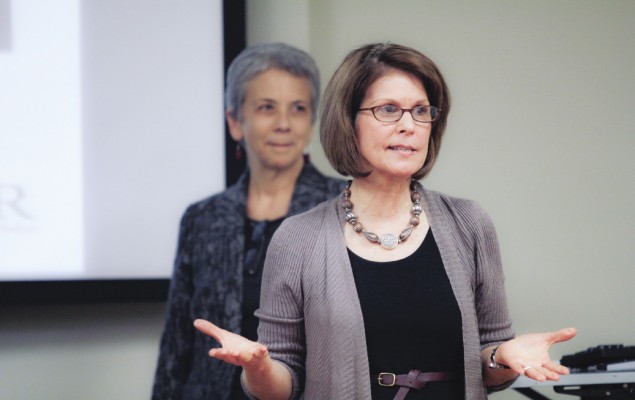
During the recent civil war in Nepal, the staff of a vocational training project reported that the young trainees were displaying behaviors probably related to the stress of the violence: difficulty concentrating, aggression, low self-confidence and the tendency to suddenly burst into tears. Many had difficulty completing the course, and those that did finish had difficulty succeeding in the labor market, which diminished the project’s success.
In a paper on the issue, entitled “The Vicissitudes of Empowerment in Conflict-Afflicted Nepal,” Barbara Weyermann reported that project staff, “didn’t want to ask the trainees about how they or their families were affected by the war because they didn’t know what to do when the young men started to cry.”
The human tendency to avoid difficult topics, at both individual and organizational levels, is hardly unique. Weyermann notes that “in most ‘normal’ development projects, the effect of violence [on beneficiaries] is almost always ignored.”
On the other side of the world, Nicaraguan psychologist Martha Cabrera observed in the late 1990s that no one seemed to be taking note of the subjective, psychological or spiritual needs of her country in the post-conflict, post-Hurricane Mitch era. Development and humanitarian assistance projects abounded. Everyone had been “work-shopped” on various topics, but with few concrete results. Cabrera wondered why.
Using a health survey as a point of entry, Cabrera and her colleagues at the Valdivieso Center traveled to the worst-affected regions with a goal of addressing psychological needs. The depth and breadth of what they discovered staggered them. They found high levels of apathy, isolation, aggressiveness, abuse, chronic somatic illness and low levels of flexibility, tolerance and the ability to trust and work together. They reported their findings in a paper entitled “Living and Surviving In a Multiply Wounded Country.”
Nicaragua, the team realized, “was a multiply wounded, multiply traumatized, multiply mourning country,” which had “serious implications for people’s health, the resilience of the country’s social fabric, the success of development schemes, and the hope of future generations.” Cabrera noted it is hard to move forward, and to build democracy, when the personal and communal history still hurts.
What Weyermann and Cabrera describe are the effects of trauma on the body, brain and behavior of individuals, communities and societies.
In recent years, humanitarian and development organizations have recognized these needs and have increasingly included psychosocial programs when working with populations impacted by natural disasters or violence. Weyermann notes that the support provided by these projects can be vital to victims/survivors, but she points out two drawbacks: the stigma those receiving services often face; and the fact that addressing economic hardship – which can be traumatic in itself – is outside of the mandate of most psychosocial projects.
A way to address these limitations is for organizations to become “trauma informed” so that a trauma-sensitive framework can be integrated into any project: economic, health, governance and others. This means more than putting a psychologist on every project team. Awareness of the repercussions of trauma needs to extend across the organization, to headquarters and field staff alike.
Being trauma-informed includes:
- Understanding the physiological, emotional, cognitive, behavioral and spiritual impact of traumatic events (current or historic) on recipient populations, and how unaddressed trauma contributes to cycles of violence.
- Going beyond traditional mental health diagnosis and symptoms of post-traumatic stress disorder as the measure of trauma impact, and also recognizing community and societal dynamics and behaviors that are indicators of unaddressed trauma.
- Identifying processes from multiple fields – human security (including economic security), conflict transformation, restorative justice, neurobiology, psychology and spirituality – that can address trauma and increase resilience.
- Recognizing that addressing the psychological needs of populations creates the need to monitor staff for secondary trauma and to equip them with self-care skills and tools.
Trauma-informed organizations can design programs that are trauma sensitive across all stages of the programming cycle: needs assessment, design, implementation, and monitoring and evaluation. Trauma-sensitive programming can improve project outcomes, reduce stigma around trauma, and provide new ways to address difficult issues that contribute to intractable conflict and violence.
Cabrera says the people they worked with were initially startled by the approach. But they thanked them afterwards because it helped them recognize their own resilience, find meaning in what they had lived through, and move forward in life.
Moving forward – that is, after all, part of what development and humanitarian assistance is about.
Carolyn Yoder, a 1972 graduate of EMU, was the first director of Strategies for Trauma Awareness & Resilience (STAR). She holds an MA in linguistics and an MA in counseling psychology, as well as multiple licenses in counseling. She has lived and worked around the globe, including extended sojourns in the Middle East, Eastern and Southern Africa, Armenia, Asia, and the Caribbean. This article originally appeared in the September 2012 issue of Monthly Developments Magazine. It is reprinted with permission.
1 comment on “Being Sensitive to Trauma in Humanitarian and Development Aid”
Comments are closed.